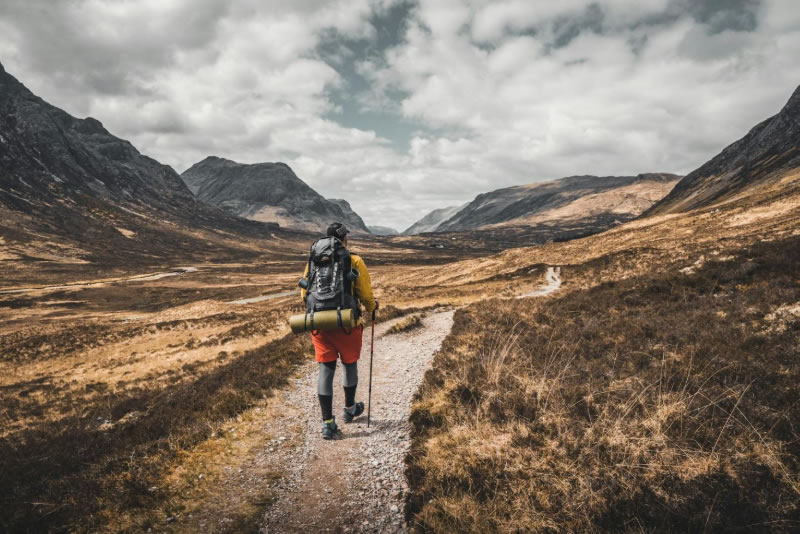Walking the Years: How Hiking Sustains Strength After Fifty

Long before fitness trackers and gym schedules, walking shaped people’s daily strength. Paths across fields or rocky hills kept bodies in motion without special effort. For many who have crossed fifty, hiking feels like returning to a rhythm once forgotten. It restores breath, and loosens joints.
This kind of movement connects surprisingly well with strategy and patience. Hikers who move through long trails learn how to pace themselves. That same attitude helps in careful analysis or planning. 1xBet iOS app Ireland often comes up in such contexts, where calm focus and measured timing matter as much as strength. The habit of managing one’s pace outdoors mirrors the self-control needed in mental activities that rely on observation rather than reaction.
Doctors see in hiking a plain but effective form of endurance. Regular walks strengthen the heart. Hills train balance; flat paths build rhythm. Over months, a walker’s pulse slows, steps grow firmer, and the sense of control returns – not forced, just earned through repetition.
Physical Endurance After Fifty
The body changes with age, yet adaptation never stops. Hiking works because it uses what remains natural: movement driven by weight and gravity. Soft hills wake dormant muscles and rebuild coordination. Downhill stretches improve balance and stability in the ankles and knees.
Many trainers suggest hiking over gym machines for adults past middle age. The motion is complex but kind to bones. Regular walkers often note better posture and stronger breathing after a few months. Medical data confirms these impressions.
Quiet Thought and Rhythm
The link between hiking and clear thinking has existed for centuries. Writers and scientists in the nineteenth century already spoke of long walks as their best form of reflection. Today, that same rhythm helps people manage modern tension. A slow climb gives space to order thoughts that rarely fit into crowded schedules.
Such mental steadiness has value far beyond health. The slow tempo teaches control. It mirrors the patience required in analysis, planning, or strategic betting. Moving step by step becomes an exercise in restraint. Over time, walkers find that their reactions soften and judgement improves.
Hiking’s Measured Rewards
Not all progress can be seen on scales or trackers. Hiking works quietly. Its effects appear through small daily signs:
- Breath deepens after short inclines.
- Morning stiffness fades within weeks.
- Sleep grows longer and steadier.
These are not promises but patterns observed by doctors and hikers alike. What matters is routine. Even two hours a week, kept for a year, can transform circulation and balance.
Social Strength and Shared Pace
Walking with others builds discipline without competition. In many towns, groups of retirees meet each weekend for simple trails. They talk, rest, and walk again. That rhythm replaces lost office routines and gives structure to the week. Studies since the 1990s note that group hikers stay consistent three times longer than solitary ones.
Shared walking also teaches coordination. A team adjusts speed naturally, just as players synchronise during a match. The conversation fills the air, yet the movement stays focused. Many participants say it feels like belonging again, not training.
A Tradition Renewed
Hiking may look modern in sportswear, but its idea is old. Long ago, Roman soldiers trained by walking with packs across hills to strengthen endurance. Two hundred years ago, early alpinists treated mountain walks as moral lessons in patience. By the late twentieth century, sports physicians finally measured what the ancients sensed: steady walking reshapes the heart’s rhythm better than intense bursts.
Modern coaches now include light hiking in recovery schedules. It is used after tournaments to stabilise heart rate and muscle tone. The simplicity hides precision; even professional athletes rely on slow movement to rebuild internal order.
Restoring Control Through Motion
Past fifty, control means more than strength. It means knowing limits and keeping them steady. Hiking teaches exactly that. Each trail offers small decisions – when to pause, when to climb, when to turn back. These moments train attention in ways machines cannot.
With time, walkers report more energy and fewer sudden mood shifts. Their stride becomes confident but calm. The same qualities shape reliable judgement in other fields, from long-term analysis to careful forecasting.
The Path Forward
Age does not end motion; it changes its rhythm. Hiking turns that rhythm into health. It demands no special skill, only regular effort and curiosity. The road ahead may rise slowly, but each step adds quiet strength.
For people over fifty, that is often the most valuable gain: steadiness in breath, patience in thought, and the calm of knowing that movement itself is the measure of life.
